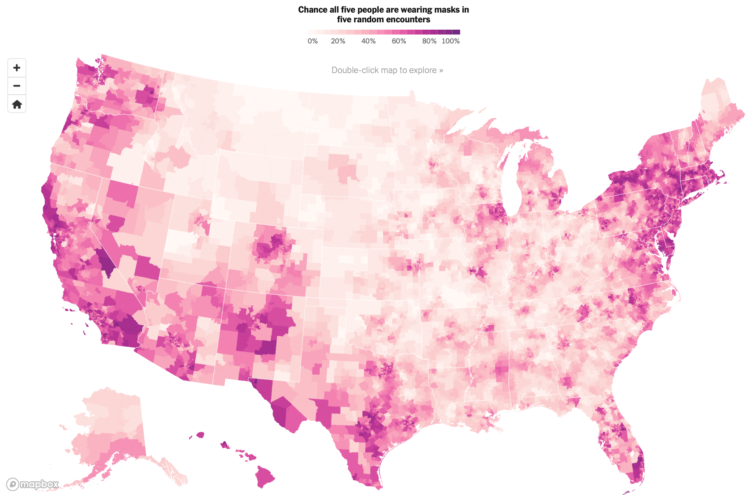NYT’s The Upshot ran a survey through the data firm Dynata asking people how often they wear a mask in public. The Upshot then mapped the likelihood that a random group of five people are all wearing masks:
These variations reflect differences in disease risk and politics, but they also may reflect some local idiosyncrasies. Elizabeth Dorrance Hall, an assistant professor of communications at Michigan State University, said mask behavior can be subject to a kind of peer pressure: If most everyone is wearing one, reluctant people may go along. If few people are, that can influence behavior, too. Such dynamics can shape the behavior of friends, neighbors and communities.
As you might guess, it looks similar to the map of where people were staying at home.



